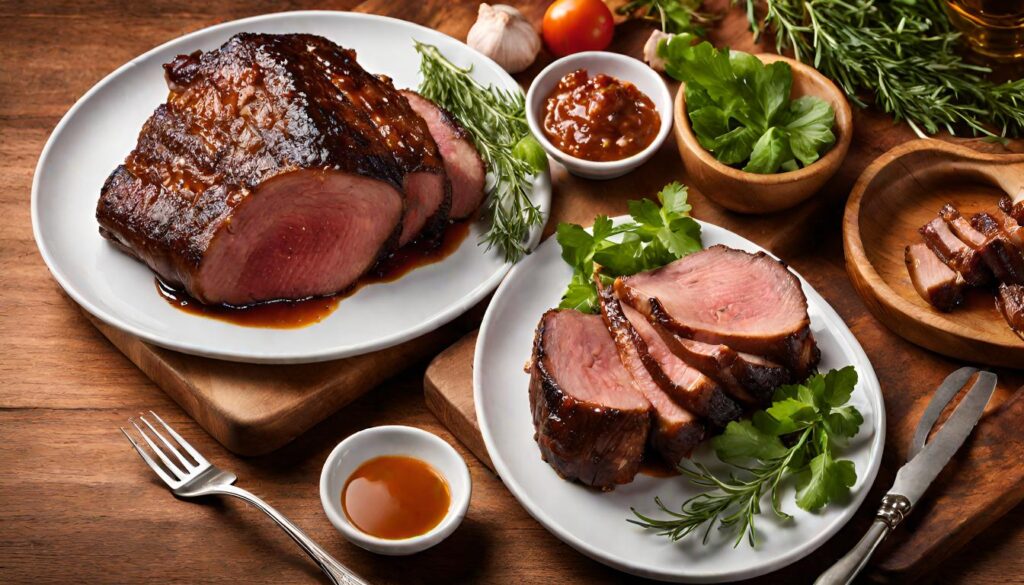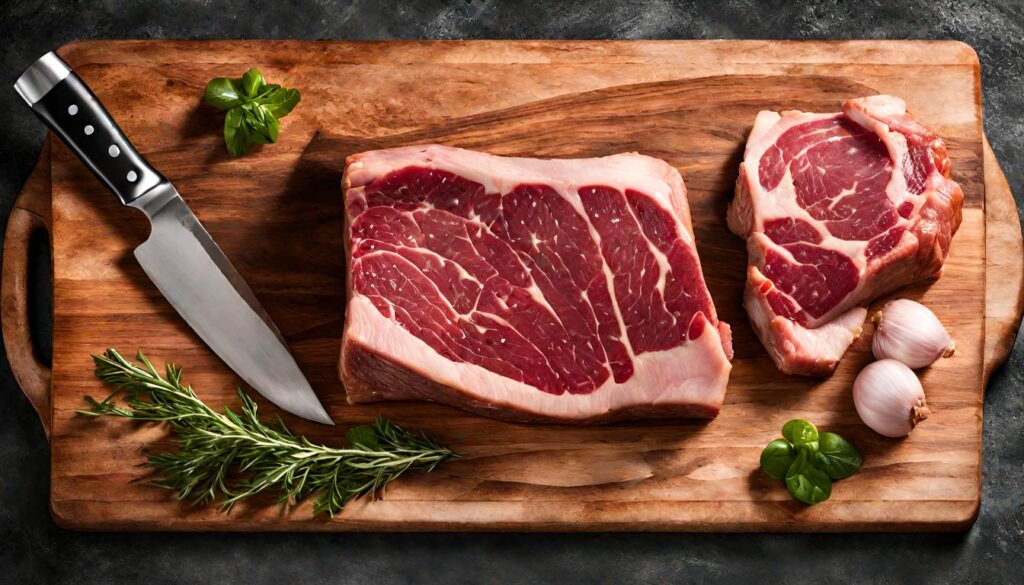In the culinary world, the exploration of different cuts of meat opens up a realm of flavors and cooking techniques. Among these, beef belly, also known as beef navel, stands out for its versatility and rich taste. This article delves into the nuances of beef belly, from understanding its nature to mastering various cooking methods. Whether you’re a seasoned chef or a curious food enthusiast, this comprehensive guide will enhance your culinary repertoire with beef belly.
Part 1: Understanding Beef Belly
What is Beef Belly?
Beef belly, a cut from the cow’s abdomen, is often overshadowed by more popular cuts like sirloin or brisket. Yet, this hidden gem offers a unique combination of flavor and texture. Rich in fat, beef belly becomes incredibly tender when cooked, making it a sought-after choice for various cuisines.
Read more :
The Popularity of Beef Belly in Cuisine
The culinary world has recently seen a surge in the popularity of beef belly. Its versatility allows it to be the star in a range of dishes, from traditional braises to modern BBQ delights. The cut’s ability to absorb flavors and retain moisture makes it a favorite among chefs and home cooks alike.

Part 2: Exploring Various Beef Cuts
Beef Navel and Beef Plate
When it comes to beef cuts, beef navel and beef plate are often mentioned in the same breath. The beef navel is part of the beef plate, which is a larger section from the cow’s rib area. This cut is known for its rich fat content, contributing to a deep, robust flavor. It’s a cut that’s often overlooked but offers a world of culinary possibilities.
Difference Between Beef Belly and Brisket
Understanding the difference between beef belly and brisket is crucial for any meat connoisseur. While both cuts come from the lower parts of the cow, they differ significantly in texture and cooking methods. Brisket, derived from the cow’s chest, has less fat and requires longer cooking times to achieve tenderness. In contrast, beef belly, with its higher fat content, becomes tender more quickly and offers a richer flavor profile.
In the next section, we’ll delve into the art of preparing beef belly, exploring various cooking techniques that bring out its best flavors.
Part 3: Mastering Beef Belly Preparation
Braising Beef Belly
Braising is a fantastic way to cook beef belly, transforming it into a tender, flavorful dish. This slow-cooking method involves first searing the beef to create a caramelized crust, then cooking it gently in a flavorful liquid. The result? A melt-in-your-mouth experience that’s hard to beat. When braising It, consider using a mix of beef broth, red wine, or soy sauce, along with aromatics like garlic and onion, to infuse the meat with rich flavors.
Grilling and Smoking Beef Belly
For those who love a good BBQ, grilling and smoking beef belly are must-try methods. Grilling gives it a delicious char and smoky flavor, perfect for a summer cookout. Smoking, on the other hand, requires patience but rewards you with deeply infused smoky flavors and a tender texture. Whether you’re grilling or smoking, remember to keep the fat content in mind, as it will render and add juiciness to the meat.
Read more:
Homemade Chicken Nuggets with Ground Chicken
Slow Cooking and Braising Methods
Slow cooking is another excellent way to prepare it, especially if you’re after convenience and deep flavor development. This method allows the fat and connective tissues in the beef belly to break down slowly, resulting in incredibly tender meat. Combine your beef belly with a flavorful liquid, set your slow cooker, and let time do the rest.
Part 4: Delicious Beef Belly Recipes
Braised Beef Dishes
Braised beef belly dishes are a symphony of flavors and textures. One classic recipe is beef belly braised in red wine and herbs, where the meat is slowly cooked in a rich sauce, resulting in a dish that’s both tender and packed with depth. Serve this with mashed potatoes or crusty bread to soak up the delicious sauce.
Ground Beef and Beef Jerky
Ground beef belly offers a richer, more flavorful alternative to regular ground beef. It’s perfect for making juicy burgers or flavorful meatballs. If you’re into homemade snacks, try making beef jerky from beef belly. Thinly slice the meat, marinate it in your favorite spices, and dehydrate it for a homemade treat that’s both tasty and nutritious.
BBQ Beef and Beef Bacon
BBQ enthusiasts will love the rich flavor that beef belly brings to the grill. Its fat content keeps the meat moist and tender, making it ideal for slow-cooked BBQ. For something a bit different, try making beef bacon. Cure it with salt and spices, then smoke it until it’s crispy and golden. It’s a unique twist on traditional pork bacon and a surefire hit for any meal.
Read more :
Small Batch Chocolate Chip Cookies
Continue to Part 5: Health Aspects of Beef Belly
Part 5: Health Aspects
Nutritional Content
Beef belly is not just about tantalizing your taste buds; it also has a nutritional profile worth considering. Rich in proteins and essential nutrients like iron and B vitamins, it can be a valuable part of a balanced diet. However, its high fat content, particularly saturated fat, means it should be consumed in moderation, especially for those mindful of heart health.
Dietary Considerations
When incorporating beef belly into your diet, it’s important to balance it with healthier cooking methods and sides. Pairing it with vegetables or using it in dishes with broth-based sauces can help mitigate its richness. For those on specific diets, like low-carb or keto, it can be a fitting choice due to its high fat and low carb content.
Part 6: Frequently Asked Questions
Common Queries and Answers
- What’s the Best Way to Cook it for Maximum Flavor?
- Slow cooking methods like braising or smoking are ideal for maximizing the flavor of beef belly. These methods allow the fat to render slowly, infusing the meat with richness and depth.
- Can it Be Part of a Healthy Diet?
- Yes, in moderation. While beef belly is high in fat, it’s also rich in protein and essential nutrients. Balancing it with healthier sides and cooking methods can make it part of a nutritious diet.
- Is it the Same as Pork Belly?
- No, they come from different animals and have distinct flavors and textures. It is generally leaner and has a beefier taste compared to the richer, fattier pork belly.
- How Do I Store Leftover Beef Belly?
- Cooked beef belly can be stored in an airtight container in the refrigerator for up to 3-4 days. For longer storage, it can be frozen for up to 3 months.
- Can it Be Used in Different Cuisines?
- Absolutely! Its versatility makes it suitable for a variety of cuisines, from Asian to American BBQ.

Part 7: Summing Up the World of Beef Belly
In this comprehensive guide, we’ve journeyed through the various facets, a versatile and flavorful cut of meat. From understanding its nature and comparing it with other beef cuts, to exploring a myriad of cooking techniques and recipes, we’ve seen how it can be a star in any culinary setting.
We’ve also delved into the nutritional aspects , balancing its rich flavor with health considerations. The FAQs section provided further insights, making it more approachable for everyone.
In summary, whether you’re braising, grilling, or smoking, offers a unique taste experience. Its versatility in recipes, from traditional braises to innovative BBQ dishes, makes it a valuable addition to any kitchen. While mindful of its rich fat content, enjoying it in moderation can be part of a balanced and nutritious diet.









Comments are closed.